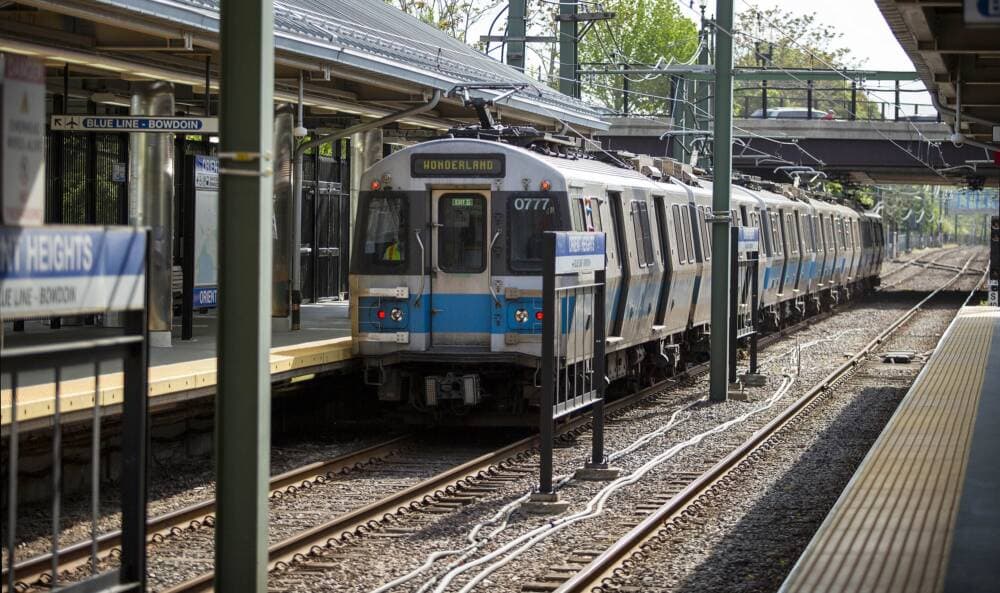My updated MBTA minimum frequency map is now updated to reflect Spring 2024 schedules.
Here are the following changes to the MBTA frequency map. Additional details can be found below the map. At this time, I am not updating the comparison to Amsterdam maps (just yet).
Routes moved to lower frequency ranges:
Route 112 moved to "Every 2 hours or less" from "Every 1 - 2 hours" - updated Sunday schedule now below 11 trips (11 -> 10).
Route 134 moved to "Every 1 - 2 hours" from "Every 30 - 60 minutes" - updated Sunday schedule now below 21 trips (21 -> 18).
Routes moved to higher frequency ranges:
Route 714 moved to "Every 1 - 2 hours" from "Every 2 hours or less" - updated Sunday schedule exceeds 11 trips (9 -> 13).
Route 71 east of Waltham Square moved to "Every 20 - 30 minutes" from "Every 30 - 60 minutes"- updated Sunday schedule exceeds 41 trips (40 -> 42).
Green Line D moved to "Every 10 - 12 minutes" from "Every 12 - 15 minutes"- updated Sunday schedule exceeds 101 trips (100 -> 107).
Note: While Ashmont Branch meets the 61 Sunday trips threshold required to be displayed as "Every 15 - 20 minutes" on this map, the Braintree Branch doesn't yet meet this threshold (60 is below 61). As such, I will not update any portion of the Red Line on this map, until the next schedule change (2024 June 16th) to updated frequency threshold ranges.
Old maps:
Winter 2024 (2024Q1)
Fall 2023 (2023 Q4)
Summer 2023 (2023 Q3),
Spring 2023 (2023 Q2v2),
Pre-slow zone map (2023 Q2),
Original map (2023 Q1) (Oldest map available)
View attachment 48977
Detailed changes:
42 routes have service increases or decreases. An additional 77 weekday trips, 10 Saturday trips, and 10 Sunday trips have all been added to the systemwide schedule. Excluding rapid transit and Silver Line routes, 23 weekday bus trips and 4 Sunday bus trips were removed from the systemwide bus schedule, and 4 Saturday bus trips were added systemwide.
Service cuts and frequency reductions:
2 subway routes and 16 bus routes will see reduced service this Spring.
Subway frequency reductions:
- GL B weekend frequency decreases by 12 Saturday roundtrips and 2 Sunday roundtrips (132 -> 120, 114 -> 112)
- GL E Sunday frequency decreases by 5 roundtrips (117 -> 112)
Bus service cuts and frequency reductions:
- 34 - 8 fewer weekday trips (51 -> 43)
- 34E - 7 fewer weekday trips (43 -> 36)
- 66 - 5 fewer weekday trips (106 -> 101)
- 120 - 3 fewer weekday trips (35 -> 32)
- 121 - 3 fewer weekday trips (14 -> 11)
- 96 - 3 fewer weekday trips (30 -> 27)
- 134 - 2 fewer weekday trips and 3 fewer Sunday trips (23 -> 21, 21 -> 18)
- 8 - 2 fewer weekday trips (39 -> 37)
- 41 - 2 fewer weekday trips (26 -> 24)
- 52 - 2 fewer weekday trips (15 -> 13)
- 18 - 1 fewer weekday trip and 2 fewer Saturday trips (10 -> 9, 10 -> 8)
- 94 - 1 fewer weekday trip (30 -> 29)
- 19 - 1 fewer weekday trip (27 -> 26)
- 109 - 4 fewer Sunday trips (36 -> 32)
- 104 - 4 fewer Sunday trips (35 -> 31)
- 112 - 1 fewer Sunday trip (11 -> 10)
Service increases:
8 subway routes and 17 bus routes will see increased service this spring.
Subway:
- GL D - 2 more weekday trips, 5 more Saturday trips, and 7 more Sunday trips (128 -> 130, 114 -> 119, 100 -> 107)
- RL - 6 more weekday trips, 4 more Saturday trips, and 4 more Sunday trips per branch (x2 north of JFK-UMass) (133 -> 145, 117 -> 125, 113 -> 121 north of JFK-UMass)
- OL - 9 more weekday trips (132 -> 141)
- GL E - 10 more weekday trips and 3 more Saturday trips (147 -> 157, 120 -> 123)
- BL - 11 more weekday trips (169 -> 180)
- GL B - 13 more weekday trips (132 -> 145)
- GL C - 23 more weekday trips, 6 more Saturday trips, and 2 more Sunday trips (119 -> 142, 116 -> 122, 109 -> 111)
Bus:
- 1 - 1 more Sunday trip (81 -> 82)
- 70 - 2 more Sunday trips (40 -> 42)
- 716 - 1 more weekday trip and 1 more Saturday trip (8 -> 9, 9 -> 10)
- SL3, 9, 47, 21, 435, 7, and 65 each see 1 more weekday trip each. (weekday trips#: 96, 88, 55, 67, 18, 63, 37 -> 97, 89, 56, 68, 19, 64, 38)
- 111, 32, and 501 each see 2 more weekday trips (weekday trips#: 204, 139, 22 -> 206, 141, 24)
- SLW - 2 more weekday trips and 1 more Sunday trip (47 -> 49, 52 -> 53)
- 117 - 2 more weekday trips and 1 more Saturday trip (61 -> 63, 48 -> 49)
- 714 - 3 more weekday trips, 4 more Saturday trips, and 5 more Sunday trips (14 -> 17, 9 -> 13, 9 -> 13)
- SL1 - 17 more weekday trips and 3 more Sunday trips (99 -> 116, 107 -> 110)
Some routes have departure time changes or routing changes, however, none of them impact this analysis or the map above, as such they aren't listed here.


